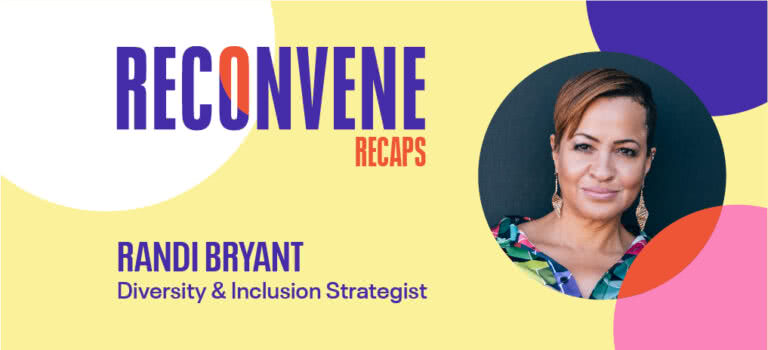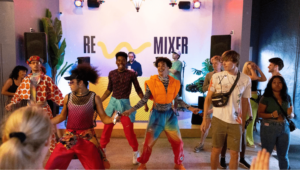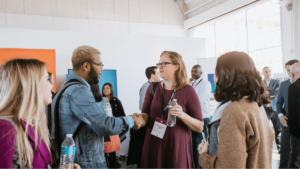Eventbrite hosted the RECONVENE summit in May 2021, bringing together thousands of event producers. We’re sharing key takeaways from popular sessions — on topics like safely returning to in-person events, the future of virtual, and best practices for growing your audience — on our blog and our RECONVENE Recaps hub.
Last May, almost immediately after George Floyd was killed by police, Randi Bryant’s phone started ringing, and her inbox piled up with new messages.
She’s a diversity and inclusion strategist and speaker, and her clients needed assistance: How did they deal with this changing world?
So Bryant got to work figuring out how to create virtual events that were engaging, inclusive, and that tackled difficult subjects during a tough time. During Eventbrite’s RECONVENE summit, she discussed what she learned about addressing inclusion in a post-pandemic world. Here are four takeaways for creators.
Watch Randi Bryant’s full talk below:
Be authentic about being inclusive
People will not take you seriously, or feel like you’re taking them seriously, if you don’t acknowledge the state of the world. Be real, Bryant says. Don’t pretend everything is OK; if you do, no one will buy into your message.
Some of Bryant’s suggestions for showing people that you recognize it’s a difficult time are:
- Play a small video that marks the moment in time, perhaps before your event’s speakers take the stage.
- Partner with organizations that have been impacted by the pandemic or the social-justice movement.
- Mention it in your materials. A simple line, like “Our thoughts are with people lost to the coronavirus,” is often sufficient.
- Make donations to organizations greatly impacted by world events.
Meet people where they are
People need to feel comfortable, and in this fraught time, not everyone wants to engage in the same way. Bryant suggests utilizing multiple mediums to connect with your guests, so they can join you via social media, or at home, or in person.
Think about how much of themselves people will feel comfortable showing you. Do you need to require cameras during virtual events, or can you make them optional?
As Bryant put it: “Think about, what is it that people may not want [others] to see, what might make them uncomfortable, and how much do people want to allow us into their space or heads? You have to think about people’s comfort levels, and those will vary.”
[cta id=”228563″]
Being inclusive means ensuring that everyone feels welcome
Be conscious about how you’re shaping an event, Bryant says. People from marginalized communities might not feel the same comfort they once did while engaging with diverse groups — especially groups in which they feel like the “only” person like them or like they won’t be seen.
To create an inclusive event where everyone feels welcome, consider: When someone visits your website, will they see people who look like them? When they look at your event materials, will they see people they identify with? If not, that person might think: “Oh, that’s not an event for me. They don’t want me.”
Bryant suggests you make sure everything you do says “welcome” — for everyone — and prioritize that throughout the entire planning of an event, and throughout its execution.
Warm people up ahead of time
We all have different levels of comfort and anxiety as we emerge from lockdown. Start warming people up for an event earlier than you would have in the past. Here are some of Bryant’s tips on how to do that:
- Hold online sessions before an in-person event.
- Schedule a meet-and-greet.
- Tweet information about the event, or create blog posts about what to expect.
- Advise people on what safety measures you’ll be taking.
- Make welcoming statements, such as: “We’re an organization that welcomes and celebrates all people.”






